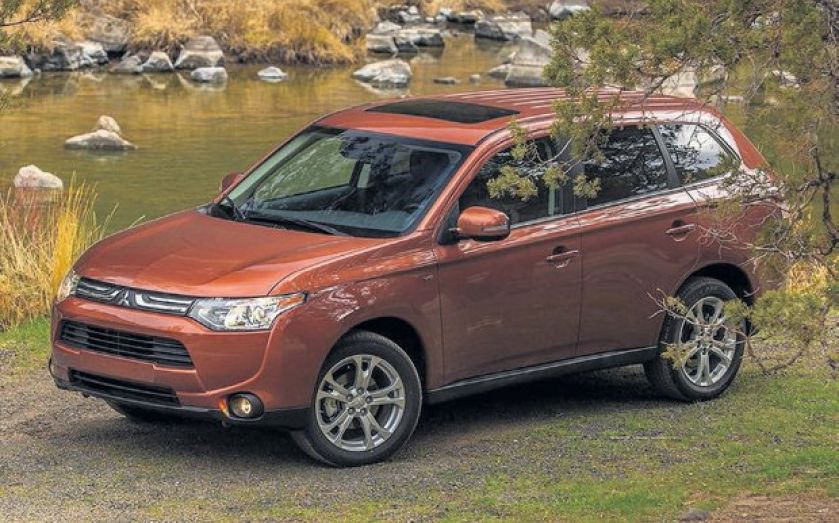A mean, green, plug-in machine

The new Mitsubishi Outlander lasts and lasts – it might just be the SUV to clean up the City
BATH is a beautiful spa town with World Heritage City status. But its traffic is terrible. If you thought the City was bad, try Bath at 8am on a weekday. It’s the perfect place to sit in a traffic jam on the A46, running down the battery life of your plug-in SUV.
PHEV stands for plug-in hybrid electric vehicle. The Outlander PHEV has a big battery pack to provide electric running, plus a petrol-electric hybrid engine for when they’re flat. For short journeys, you’ll use electric power alone. But you won’t suffer range anxiety, and you won’t need another car to drive 250 miles to the seaside. It also means nearly 150mpg, 44g/km CO2 and Congestion Charge exemption – all in the SUV package beloved of Londoners, for a bargain, grant-assisted £28,249. Those batteries do, however, need around four hours to charge from flat to full. How, I wondered, do you achieve that with a fleet of 15 launch cars?
My challenge was set. I plotted to test this car to its limits by flattening the batteries and then waiting to see what happened. My car had 14 miles’ electric range showing rather than the 30 miles of a fully charged car because it was pulled off the charger early. Easy. Scrabble around using up all the power, sample the “range extender” engine-on bit, and return.
Being Bath, the hotel was up a steep hill. As I descended, the built-in energy regeneration function kicked in. At the bottom, I now had 16 miles’ electric range in the batteries. This might be harder than I thought…
If there is charge in the batteries, the engine remains off unless you come across a really big hill. The Outlander is thus nice and silent – and even when it does move into hybrid mode, you shouldn’t notice the 2.0-litre petrol engine in normal use. Just note, when you do need full engine power, it becomes very loud, and it crashes over potholes like a sports car.
The Outlander is roomy, too. Often the batteries of “plug-ins” can take up most of the passenger and boot space, but not here. The high SUV driving position is commanding and all models are packed with gadgetry. No rival can match all this.
Finally, after an hour, I managed to get the charge display down to zero. And then? I waited expectantly for it to morph from punchy electric car into noisy petrol car, but the engine simply hummed in the background for a bit, before shutting down. Dammit, the engine had turned into a generator to charge the batteries up again. There’s a plethora of driving modes to play around with, but the default setting is remarkable enough.
The clincher was the fuel economy gauge at the end: off the scale. It only registers up to 99.9mpg; my test drive economy is thus recorded as “–.-”. Which makes this unassuming-looking Mitsubishi perhaps the most viable real-world answer to London’s local pollution problems. After impressing in Bath, can it now help clean up the City?
Richard Aucock works for motoringresearch.com
THE FACTS:
MITSUBISHI OUTLANDER PHEV
PRICE: £28,249 (after £5,000 Government plug-in car grant)
0-62MPH: 11.0 secs
TOP SPEED: 106mph
CO2 G/KM: 44g/km
MPG COMBINED: 148.6mpg
THE VERDICT:
DESIGN Two Stars
PERFORMANCE Three Stars
PRACTICALITY Three Stars
VALUE FOR MONEY Five Stars